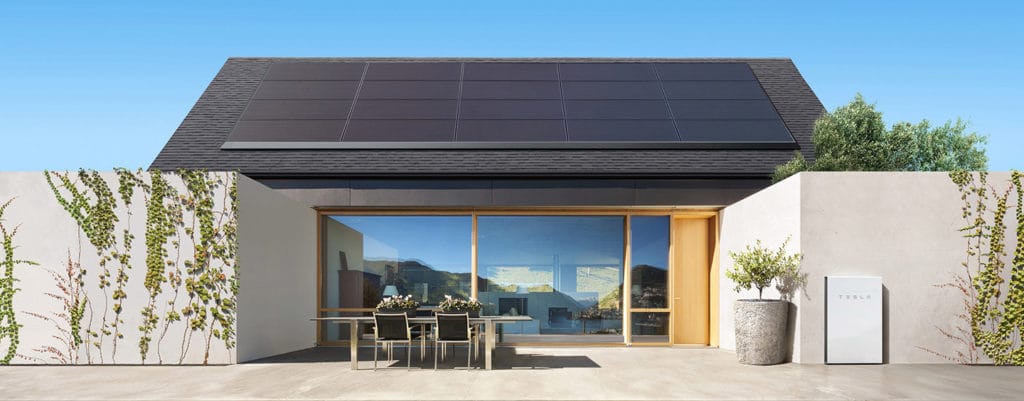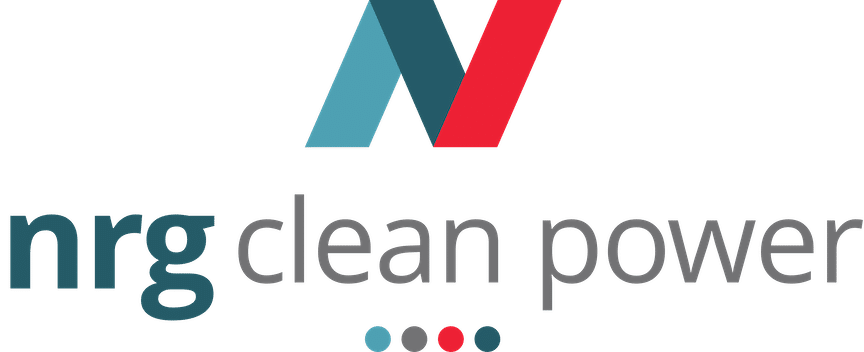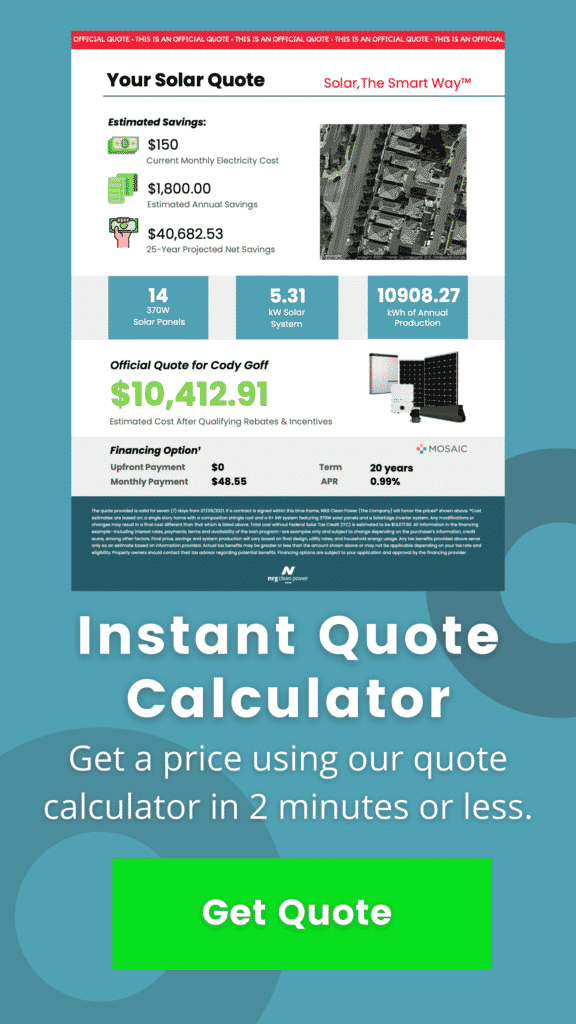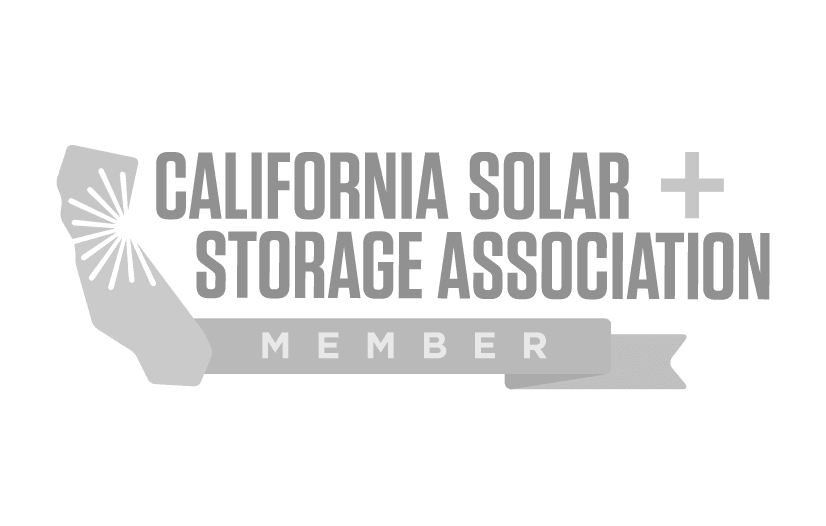
Nowadays, we associate the Tesla brand with high-end, luxurious renewable technology. However, since entering the solar industry, you can’t deny the confusion and mysticism surrounding what they actually sell. Our solar experts scoured the web to break down exactly what you get when you choose Tesla solar to help you better understand whether choosing Tesla makes sense for your home solar project.
We evaluated the costs of Tesla’s solutions, the standardized systems approach, the technology leveraged in the design and the warranty.
The Cost of Going Solar with Tesla
Going solar with Tesla seems like an incredible option. If you request a quote on the Tesla website, you will likely see super competitive prices. Oftentimes, these quotes come in with much lower prices than what you will find with any other installer.
Elon Musk recently spoke with CleanTechnica about exactly this, stating, “Solar panel cost is only ~50 cents/Watt. Mounting hardware, inverter and wiring is ~25 cents/Watt. Installation is ~50 cents/Watt, depending on system size. The other solar companies spend heavily on salespeople, advertising and complex financing instruments. We do not.”
When comparing that to the industry average of $2.50 per Watt, according to a recent EnergySage report, it makes the question of whether or not to choose Tesla solar a no-brainer.
However, as most things, it isn’t as black-and-white as it may seem.
Tesla’s low price per watt explained
You cannot deny the fact that Tesla offers low-cost solar solutions for its customers. The actual price per watt is, in fact, lower than the industry average. With that said, however, there are a few things that make this possible.
Leveraging the Tesla brand drives down cost
Traditionally, solar companies used a door-to-door sales approach to help connect with homeowners and get them to go solar. Many of the major players in the industry, like Sunrun, still use this approach (even in the current COVID-19 climate). Door-to-door sales not only pose health threats in wake of the global pandemic, but also drive up operational costs for solar companies.
Meanwhile, Elon Musk, personally, has a huge social media following. This allows for lower-cost advertising and pre-sales information dissemination that would normally happen during an in-home visit.
To put this in perspective, from either Elon Musk’s personal account or the Tesla account, they can:
- Push a few tweets regarding Tesla Solar,
- Route users to their website where they can purchase an array, and
- Use their existing infrastructure to deliver on these products.
This significantly cuts down on their operating costs and allows Tesla the ability to offer cost-effective solutions.
However, this may not be as unique as some think. While some major players continue to use door-to-door tactics, driving up costs, other installers, like NRG Clean Power, have transitioned to a more-virtual approach. While these other installers may not have the same brand recognition as Tesla, by implementing these tactics, they too can drive down their costs to something more in line with the Tesla prices.
Tax-free quotes that include rebates & incentives
With that said, you must also consider how Tesla represents their pricing. Earlier, we mentioned they offer solar solutions at $1.49 per Watt across the country. While technically true, these prices do not reflect what homeowners will actually pay for their system.
The listed price excludes taxes (which can get as high as 10.5% in some parts of California). Their prices also include federal and local rebates and incentives, for which you may or may not qualify. For example:
If you live in the City of Glendale, California, and you request a Tesla solar quote, you will see a price that excludes their 10.25% sales tax and includes both the 26% federal tax credit along with a $0.25 per watt Glendale Rebate.
By presenting homeworks solar quotes in this format, it really seems like they can get some of the best prices in the country for solar. However, when taking a step back and looking at the actual cost (with tax and without incentives) their price per watt aligns much more closely with the industry average.
Tesla Solar’s Cookie-Cutter Solutions
Apart from their cost approach, when looking into Tesla as your solar installer, you need to consider engineering approach.
Tesla offers four standardized systems capacities: 4.08 kilowatts, 8.16 kilowatts, 12.24 kilowatts and 16.32 kilowatts. A standard system capacity offering simplifies the initial design and engineering process by reducing variability with module configurations. But in taking this approach, Tesla runs a higher risk of over- or under-sizing the system in a way such that production does not fully offset a customer’s energy consumption.
These solar solutions are not tailored to your home or unique energy consumption habits. They base the system size only on your location and average monthly bill. While this provides a rough idea as to what you may need, it lumps you into a category that may or may not fit your current or projected needs.
Tailored solar designs
With installers like NRG Clean Power, the beginning approach parallels that of Tesla. We look at your region and usage to get a rough idea of what kind of solution would work best for you. However, for every project, we then provide a total home energy evaluation. This breaks down your current and projected monthly energy usage, examines your home and roof type and more! Our team of energy experts even leverages technology to see what parts of your roof have heavy vs. light shading to design a perfectly tailored solar solution.
By doing this, we can provide homeowners with custom solar arrays that better align with exactly what they need out their system.
Purchasing a one-size-fits-all system will never reach the same level of precision or satisfaction as something tailored to you.
Tesla Solar Materials
The other great thing about custom solutions is that an installer can cherry pick the perfect materials to fit your needs. Installers like NRG Clean Power can design an array to feature high-efficiency solar panels that meet homeowners’ aesthetic requirements and fit within their budget. This isn’t the case with Tesla’s current model.
What solar modules are you really getting?
When requesting a quote for a Tesla solar system, you may not even realize what you would be purchasing. The solar panels (or modules) offered are actually from a company called Hanwha. Specifically, they use QPeak Duo Black solar panels.
These fall within Hanwha’s Q CELL line and leave a lot to be desired.
The Q CELL modules offer a 17% efficiency rating, which will definitely produce electricity on your home. However, they will do so at a much lower rate than a lot of the more-common panels seen across the market.
If you have a standard roof with no shading at all, you will most likely not have anything to worry about—these will work perfectly. But, if you live in an area that sees a lot of overcast days or if you have trees on your property that cast shade on your roof, a lower-efficiency panel like the Q CELL will have a notable impact on your production.
That isn’t to say the panel Tesla offers is innately bad, it just means that you will be getting a very mid-level panel that only performs well under ideal conditions.
Tesla solar inverter & monitoring capabilities
The other aspect of their solar solution is their inverter. Tesla recently released its own inverter technology which it uses in its solar systems. The Tesla inverter also has its limitations.
The traditional string inverter functions as well as it needs to, but the biggest downfall? The limited monitoring capabilities.
Most inverters nowadays (even string inverters considering they have optimizers) allow for module-level monitoring. This means that you can see exactly how well each solar panel performs in real-time and troubleshoot your system by module if you have any issues.
With the relatively dated technology leveraged in the Tesla inverter, you can only monitor your system as a whole. If any production issues do arise, troubleshooting becomes a much larger challenge and, in some cases, impossible, since you cannot see which panel is underperforming.
This may not seem like a big deal when you first look into going solar, but, considering your system should work for 20+ years, it will absolutely play a role in the long term. This is especially true when looking at the warranties you get with Tesla.
What About The Tesla Solar Warranty?
Oddly enough, Tesla’s warranty really falls short in comparison to other installers. They offer a 12.5-year workmanship warranty on their installation. While many would consider this standard, a lot of customers will find that other installers offer much more robust warranties.
As an example, companies like AMECO Solar and NRG Clean Power both offer 40-year workmanship warranties. While we understand that most installers will not or cannot offer such incredible warranties, we still always recommend consumers find an installer who at least offers a warranty for the expected life of their system, 20 years.
So, Should You Choose Tesla As Your Solar Installer?
That is the big question! Should you choose Tesla? Unfortunately, we can’t offer a quick answer as it all depends on your specific needs. Without a doubt, Tesla does offer extremely competitive pricing, which many homeowners love. But, at the same time, they are able to do that by leveraging substandard materials and an uncompetitive warranty. If you want to supplement your home with a nice-looking but simple solar array at a decent price, Tesla may be the perfect choice! However, if you want a solution tailored to your home and energy needs that features best-in-class efficiency models, you may want to consider other options.
Regardless, we recommend to anyone wanting to go solar: get multiple quotes. This allows you to compare materials, timelines, costs and more, and can even result in 15-25% savings.

Authored by Ryan Douglas
NRG Clean Power's resident writer and solar enthusiast, Ryan Douglas covers all things related to the clean energy industry.


